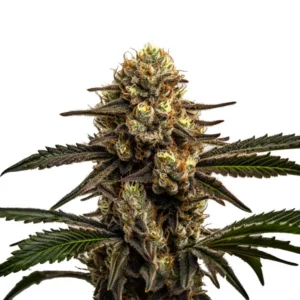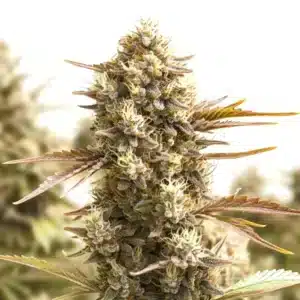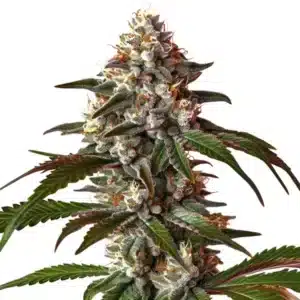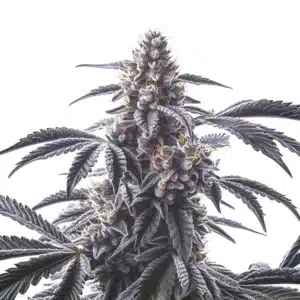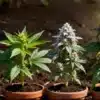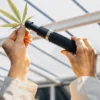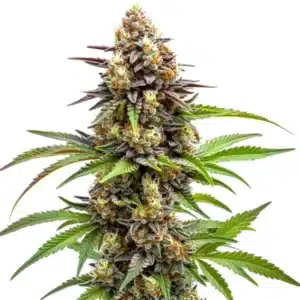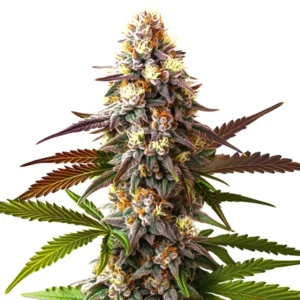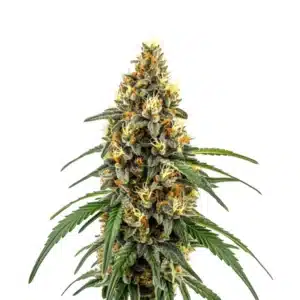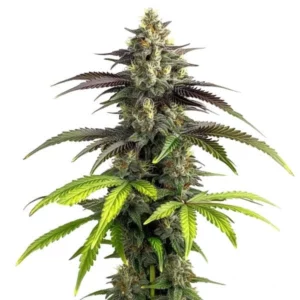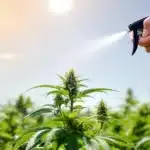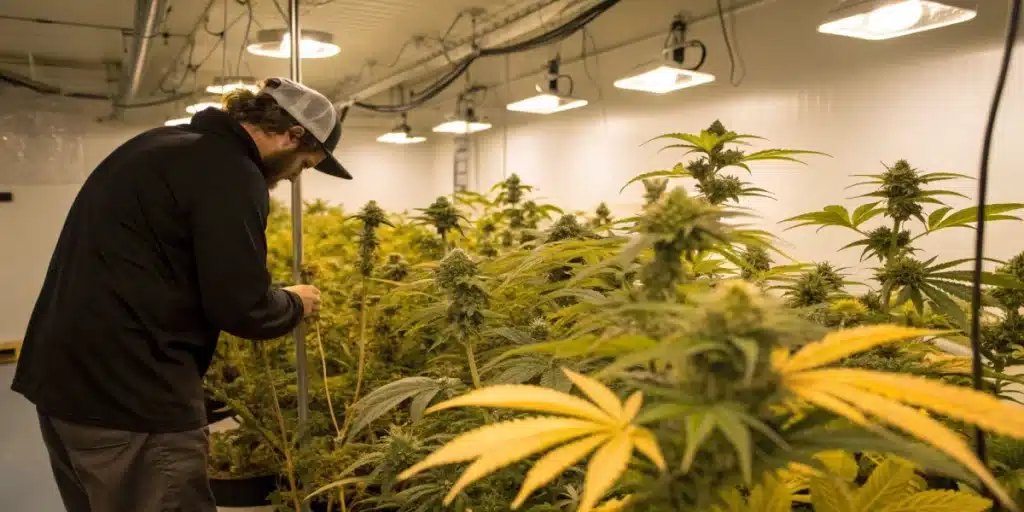
Identifying and Protecting Plants: Overcoming Cannabis Cultivation Problems
Common Cannabis Cultivation Problems
Cultivating cannabis can be an immensely rewarding endeavor, but it’s not without its challenges. Many growers, from novices to experts, face a variety of cannabis cultivation problems that can hinder the success of their crops. Recognizing these issues early can make a significant difference in maintaining a healthy garden. Among the most prevalent problems are nutrient deficiencies. These can manifest in a variety of ways, such as discoloration of leaves, stunted growth, and poor bud development. Addressing these deficiencies promptly is essential for optimal plant health.
Pest infestations are another common hurdle. These unwelcome visitors can wreak havoc in a cannabis garden, from gnawing on leaves to spreading diseases. Identifying pests early and implementing effective control measures can save your crop from devastation. Environmental factors, such as temperature and humidity, also play a crucial role in cannabis cultivation. Fluctuations in these conditions can stress plants, impacting their growth and yield. By understanding and addressing these common cannabis cultivation problems, growers can enjoy a bountiful harvest.
Recommended Strains
Apple Fritter
|
|
THC | 22% - 25% (Medium) |
|
|
Type | Feminized |
|
|
Yield | Medium |
|
|
Phenotype | 60% Indica / 40% Sativa |
Apple Fritter Autoflower
|
|
THC | 22% - 25% (Medium) |
|
|
Type | Autoflowering |
|
|
Yield | Medium |
|
|
Phenotype | 60% Indica / 40% Sativa |
Nutrient Deficiencies
Nutrient deficiencies are a frequent concern for cannabis cultivators. These deficiencies occur when plants do not receive an adequate supply of essential nutrients, leading to symptoms such as yellowing leaves and reduced growth. The most common deficiencies involve nitrogen, phosphorus, and potassium, often referred to as N-P-K. Each of these nutrients plays a vital role in plant health, contributing to processes like photosynthesis, energy transfer, and cell division. Addressing nutrient deficiencies requires a careful analysis of soil composition and the use of appropriate fertilizers.
To prevent nutrient deficiencies, growers should regularly test soil pH, as imbalances can affect nutrient uptake. Additionally, understanding the specific needs of the cannabis strain being cultivated can guide the selection of nutrient formulations. Many cultivators employ organic fertilizers, which provide a balanced supply of nutrients while enhancing soil health. Adjustments in nutrient delivery, whether through soil amendments or foliar sprays, can correct deficiencies and support robust plant growth. A proactive approach to nutrient management can minimize the impact of these common cannabis cultivation problems.
Pest Infestations
Pest infestations are another significant challenge faced by cannabis growers. Common pests include spider mites, aphids, and whiteflies, all of which can cause significant damage to plants. These pests feed on plant sap, weaken the plant’s structure, and may transmit diseases. Early detection is key to managing pest problems effectively. Regularly inspecting plants for signs of pests, such as discolored leaves or webbing, can help catch infestations before they become severe.
Integrated Pest Management (IPM) is a popular approach to controlling pest infestations. This strategy combines cultural, mechanical, biological, and chemical methods to manage pest populations. For example, introducing beneficial insects like ladybugs can help control aphid populations naturally. In cases where chemical intervention is necessary, using organic pesticides can minimize harm to the environment and the plants. Consistent monitoring and a strategic IPM plan can effectively combat one of the most common cannabis cultivation problems.
Promos & Deals
Environmental Factors Affecting Growth
Environmental factors are critical in determining the success of cannabis cultivation. Temperature and humidity are two primary elements that significantly influence plant health. Extreme temperatures, whether too high or too low, can stress plants and inhibit growth. Cannabis plants generally thrive in temperatures between 70-85°F (21-29°C) during the day and slightly cooler temperatures at night. Maintaining this temperature range is crucial for ensuring healthy growth and maximizing yield.
Humidity levels also play a vital role in cannabis cultivation. High humidity can lead to mold and mildew, particularly in dense buds, while low humidity can cause plants to lose moisture, leading to dehydration. Adjusting humidity levels according to the plant’s growth stage is essential. For instance, seedlings require higher humidity, while flowering plants benefit from drier conditions. By carefully managing these environmental factors, growers can mitigate common cannabis cultivation problems and promote a thriving garden.
Temperature Challenges
Temperature fluctuations are a common issue in cannabis cultivation that can have a profound impact on plant health. When temperatures exceed the optimal range, plants experience heat stress, which can lead to wilting, leaf burn, and poor bud development. Conversely, cold temperatures can slow down metabolic processes, resulting in stunted growth and reduced yields. Understanding the specific temperature needs of your cannabis strain is crucial for successful cultivation.
To combat temperature challenges, growers can employ various techniques, such as using fans and exhaust systems to regulate indoor temperatures. In outdoor settings, providing shade during peak sun hours or using protective covers during cold nights can help maintain consistent temperatures. Additionally, monitoring environmental conditions with thermometers and hygrometers allows for timely adjustments. By addressing temperature challenges proactively, cultivators can prevent these common cannabis cultivation problems from affecting their harvest.
Humidity Issues
Humidity issues can create significant problems in cannabis cultivation, impacting plant health and yield. High humidity levels can promote the growth of molds and mildews, particularly during the flowering stage. These fungal infections can devastate crops, rendering buds unusable. On the other hand, low humidity can cause plants to become dehydrated, leading to issues such as leaf curl and slowed growth. Managing humidity levels throughout the growth cycle is essential for preventing these common cannabis cultivation problems.
Growers can use dehumidifiers or humidifiers to maintain optimal humidity levels indoors. In greenhouses, proper ventilation is crucial to prevent moisture buildup. Monitoring tools like hygrometers provide real-time data, allowing cultivators to make necessary adjustments promptly. By understanding the relationship between humidity and plant health, growers can create an environment conducive to robust growth and avoid the pitfalls of humidity-related cannabis cultivation problems.
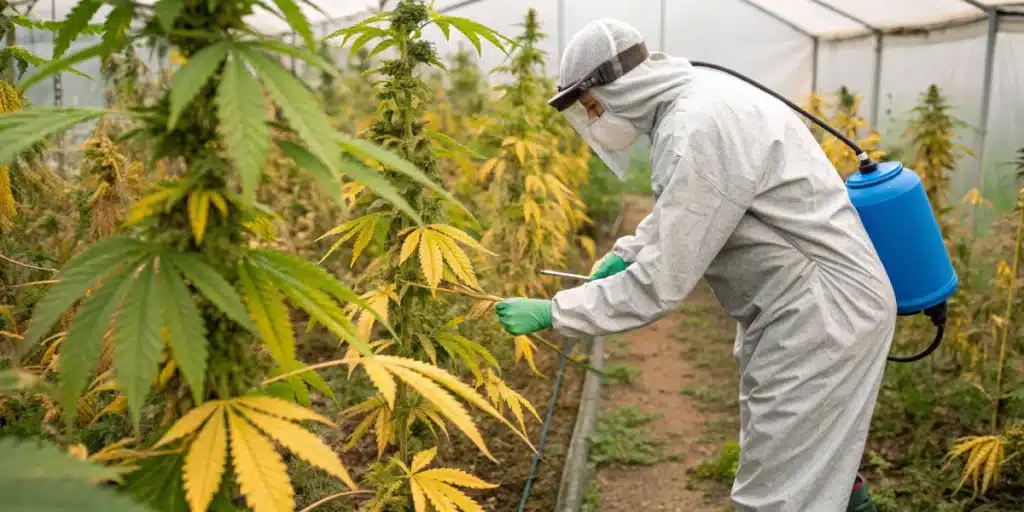
Soil and Watering Challenges
Soil and watering practices are fundamental aspects of cannabis cultivation that can present significant challenges. The quality of soil directly influences nutrient availability and plant health. Soil pH imbalances, for instance, can restrict nutrient uptake, leading to deficiencies. Cannabis thrives in slightly acidic soil with a pH range of 6.0-7.0. Regularly testing soil pH and making necessary amendments can prevent these common cannabis cultivation problems.
Watering practices also play a crucial role in plant health. Overwatering can suffocate roots and create a breeding ground for pathogens, while underwatering can deprive plants of essential moisture, leading to stress and reduced growth. Understanding the water needs of your cannabis plants, which vary depending on the growth stage and environmental conditions, is vital. Implementing a consistent watering schedule and using well-draining soil can help prevent soil and watering-related cannabis cultivation problems.
Soil pH Imbalances
Soil pH imbalances are a prevalent issue in cannabis cultivation that can hinder nutrient absorption and plant health. When soil pH falls outside the ideal range of 6.0-7.0, essential nutrients become less available to plants, leading to deficiencies and stunted growth. Identifying pH imbalances early is crucial for maintaining a healthy cannabis garden. Regular soil testing using pH meters or test kits can help growers monitor and adjust pH levels effectively.
To correct soil pH imbalances, cultivators can use amendments such as lime to raise pH or sulfur to lower it. Additionally, using pH-balanced fertilizers ensures that added nutrients remain available to plants. Understanding the specific pH preferences of different cannabis strains can also guide soil preparation and nutrient management. By addressing soil pH imbalances, growers can prevent one of the most common cannabis cultivation problems and support optimal plant growth.
Overwatering and Underwatering
Proper watering practices are essential for healthy cannabis cultivation, yet overwatering and underwatering remain common issues. Overwatering can lead to root rot, as excess water displaces oxygen in the soil, creating anaerobic conditions that promote fungal growth. Symptoms of overwatering include yellowing leaves, wilting, and slow growth. Conversely, underwatering deprives plants of necessary moisture, causing stress, leaf curling, and reduced vigor.
To strike the right balance, growers should consider factors such as plant size, growth stage, and environmental conditions. It’s beneficial to allow the topsoil to dry slightly between waterings, encouraging root development and preventing waterlogged conditions. Employing well-draining soil and containers with adequate drainage holes can also prevent overwatering. By understanding the water needs of cannabis plants, cultivators can avoid these common cannabis cultivation problems and promote robust growth.
Genetics and Plant Health
The genetics of cannabis plants play a significant role in their health and growth potential. Strain sensitivity is an important factor to consider, as some strains are more resilient to environmental stresses and common cannabis cultivation problems than others. Understanding the genetic characteristics of your chosen strain can guide cultivation practices, from nutrient management to environmental control.
Disease susceptibility is another genetic consideration. Some strains are naturally more resistant to diseases, while others may require more vigilant care to prevent infections. Selecting strains with robust genetics can reduce the risk of encountering significant cultivation challenges. By prioritizing genetics in the selection process, growers can enhance plant health and minimize the impact of common cannabis cultivation problems.
Strain Sensitivity
Strain sensitivity is a critical aspect of cannabis cultivation that influences how plants respond to environmental conditions and stressors. Some strains are known for their hardiness and ability to thrive in a range of conditions, while others require more precise care to reach their full potential. Understanding the specific needs of your chosen strain can inform decisions regarding nutrient delivery, temperature control, and pest management.
For sensitive strains, growers may need to implement additional protective measures, such as climate control systems and tailored nutrient regimens. Researching strain characteristics and seeking advice from experienced cultivators can provide valuable insights into managing strain sensitivity. By addressing the unique needs of each strain, growers can mitigate common cannabis cultivation problems and optimize plant health and yield.
Disease Susceptibility
Disease susceptibility is a genetic factor that can significantly impact cannabis plant health. Some strains are more prone to diseases such as powdery mildew, bud rot, and root rot, which can devastate crops if not managed effectively. Understanding the disease susceptibility of chosen strains is crucial for implementing preventive measures and responsive treatments.
To combat disease susceptibility, growers should prioritize hygiene in the cultivation environment, using sterilized tools and maintaining clean facilities. Implementing a regular inspection routine can help identify early signs of disease, allowing for prompt intervention. Cultivators may also consider using disease-resistant strains to reduce the risk of infections. By proactively addressing disease susceptibility, growers can prevent one of the most common cannabis cultivation problems and ensure a healthy harvest.
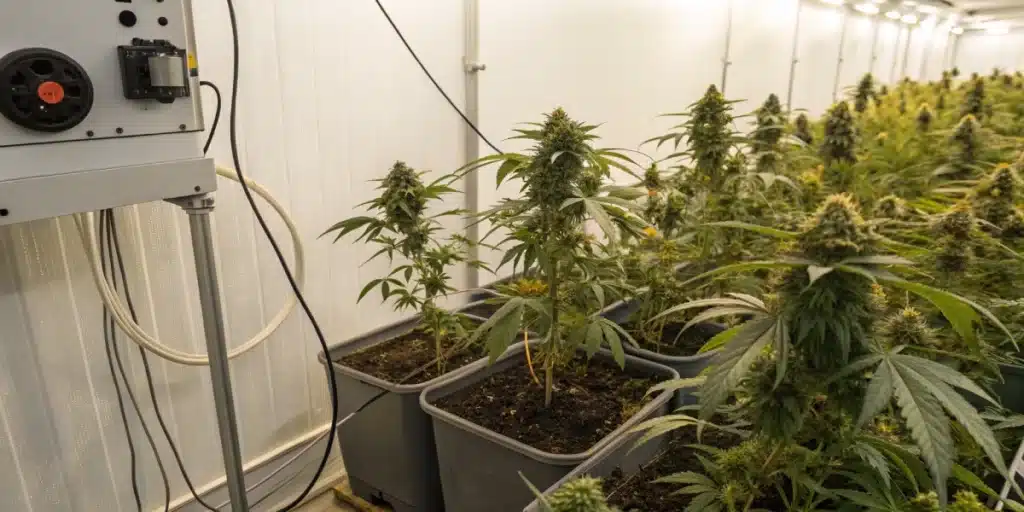
FAQs about cannabis cultivation problems
What are the most common problems in cannabis cultivation?
The most common problems in cannabis cultivation include nutrient deficiencies, pest infestations, and environmental challenges such as temperature and humidity fluctuations. Additionally, soil pH imbalances and improper watering practices are frequent issues. By addressing these challenges through careful monitoring and proactive management, growers can enhance plant health and yield.
How do environmental factors affect cannabis growth?
Environmental factors, including temperature and humidity, play a crucial role in cannabis growth. Extreme temperatures can stress plants, leading to reduced growth and yield. High humidity can cause mold and mildew, while low humidity can dehydrate plants. Managing these factors through climate control and monitoring is essential for preventing common cannabis cultivation problems and promoting healthy growth.
What measures can prevent cultivation issues?
Preventing cultivation issues involves a combination of strategies, including selecting robust genetics, implementing Integrated Pest Management, and maintaining optimal environmental conditions. Regular soil and pH testing, along with tailored nutrient regimens, can prevent nutrient deficiencies. Consistent monitoring and timely adjustments are key to mitigating common cannabis cultivation problems and ensuring a successful harvest.


